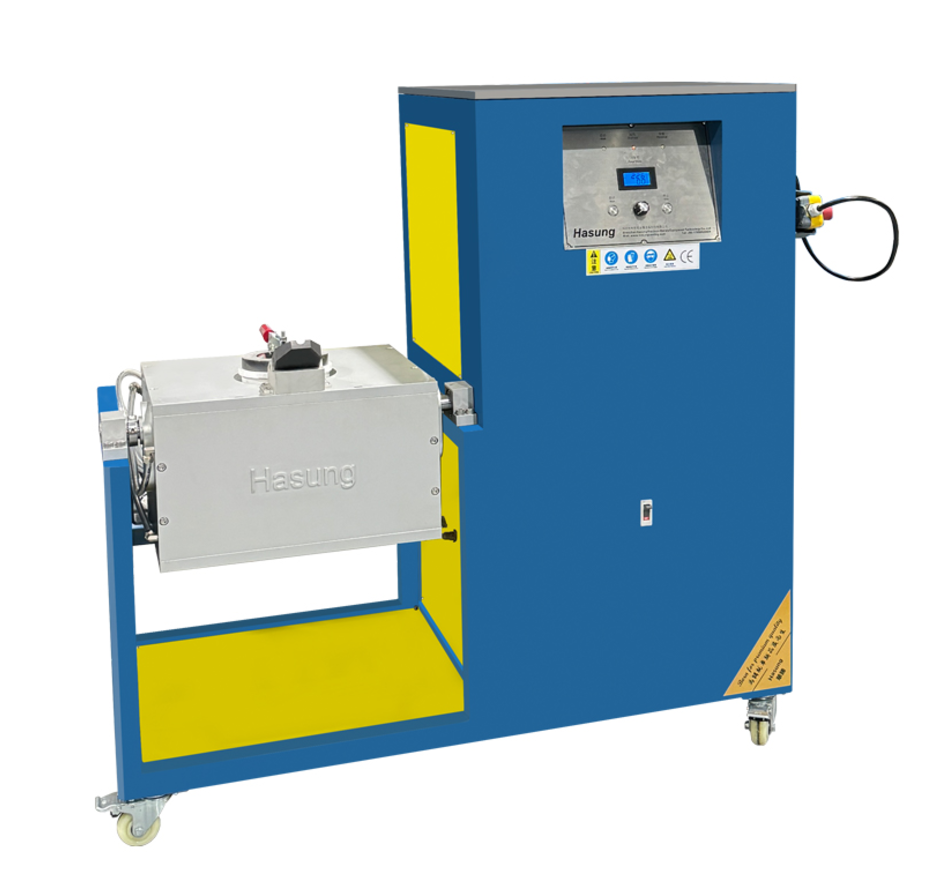In the long development process of the metal processing industry, the melting process is like an insurmountable mountain, always restricting the improvement of production efficiency and product quality. The traditional manual gold melting method has many drawbacks, and the emergence of automatic pouring melting machines is like a dawn, bringing new opportunities for the development of the industry. So, can it break the old pattern and achieve a comprehensive subversion of traditional gold melting methods?
1.The Tragedy of Tradition: Analysis of the Dilemma of Manual Gold Melting
(1) Efficiency bottleneck: snail like production rhythm
The manual gold melting process is cumbersome, and workers need to carefully place the metal raw materials in the crucible first, and then gradually heat them up with the help of heating equipment. Taking the common gold smelting as an example, due to the difficulty in accurately controlling the temperature through manual control, the heating process is long and unstable, and it often takes 15 to 20 minutes or even longer to complete a smelting. Such an inefficient production pace undoubtedly becomes a serious obstacle to the development of enterprises in the modern market environment that pursues efficient output.
(2) Human Burden: The Heavy Chains of Workers
Manual gold melting not only tests the endurance of workers, but also places extremely high demands on their physical strength. Throughout the entire melting process, workers need to closely monitor the heating equipment and adjust the temperature based on experience. Even a slight negligence may lead to temperature control and affect the quality of the metal. After the metal melts, the pouring process is even more challenging. Workers need to tilt the crucible with stable and powerful hands to ensure that the molten metal flows evenly into the mold. Long term standing work and high-intensity operations can easily make workers physically and mentally exhausted, and even a slight carelessness may lead to safety accidents, such as burns caused by metal splashing.
(3) Quality fluctuations: difficult to smooth out product differences
The operating techniques and experiences of different workers vary, and even the same worker may find it difficult to achieve complete consistency in their operations at different times. This leads to significant fluctuations in the quality of metal products produced by manual melting, making it difficult to meet uniform standards in terms of metal purity, internal structure, and appearance flatness. In the high-end manufacturing industry and the consumer market with strict requirements for product quality, the instability of this quality seriously limits the competitiveness of enterprises.
2.Challenges and opportunities coexist: the development path of automatic pouring melting machines
(1) Cost threshold: high investment capital pressure
Despite the significant advantages of automatic pouring melting machines, their high purchase cost has become the primary challenge faced by many enterprises, especially small businesses and workshops. A high-performance device usually costs tens of thousands of yuan or even more, which is undoubtedly a heavy expense for small and micro enterprises with relatively weak funds, and to some extent affects its promotion and application.
(2) Technical threshold: Talent demand for professional skills
Although the automatic pouring melting machine is relatively easy to operate, it still requires operators to have basic electrical knowledge and equipment operation skills, be able to accurately set parameters, and perform daily maintenance. For enterprises lacking professional technical talents, not only do they need to invest extra time and cost in personnel training, but they may also experience equipment failures due to improper operation, which can affect normal production.
(3) Energy consumption considerations: long-term operational cost burden
Equipment requires a large amount of electricity consumption during operation, and in the long run, electricity costs have become an important component of enterprise operating costs. How to improve device performance while reducing energy consumption has become a focal point of concern for both device manufacturers and enterprises.
3.Promising future: The vast prospects of automatic pouring melting machines
With the continuous progress and innovation of technology, automatic pouring melting machines will make greater breakthroughs in performance optimization and cost control. On the one hand, equipment manufacturers will continuously improve induction heating technology, enhance energy efficiency, reduce energy consumption, and effectively alleviate the burden of operating costs for enterprises. On the other hand, through technological innovation and large-scale production, equipment manufacturing costs are expected to be further reduced, thereby lowering the procurement threshold for enterprises and promoting the widespread application of equipment.
In terms of market demand, with the continuous improvement of various industries’ requirements for the quality and production efficiency of metal products, the market demand for automatic pouring melting machines will continue to grow. In the future, it will not only play a greater role in traditional industries such as jewelry processing and metal crafts production, but also emerge in emerging fields such as electronics and aerospace that require high quality metal materials, completely reshaping the production pattern of the metal processing industry.
The automatic pouring melting machine, with its significant advantages, has sparked a wave of change in the metal processing industry. Despite facing many challenges at present, with the continuous maturity of technology and the gradual improvement of the market, its potential to overturn the traditional manual melting gold situation is enormous, which will bring a more efficient, intelligent, and safe new production mode to the industry development, leading the metal processing industry to a new stage of development.
Post time: Apr-09-2025












